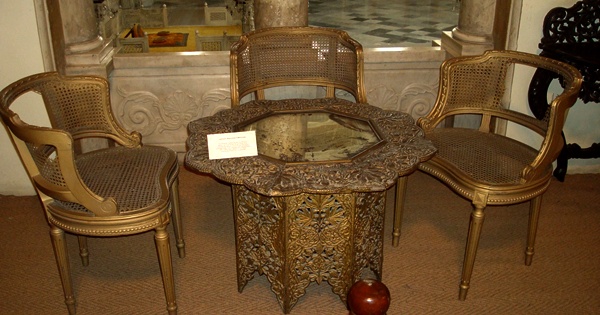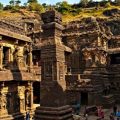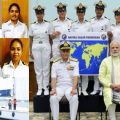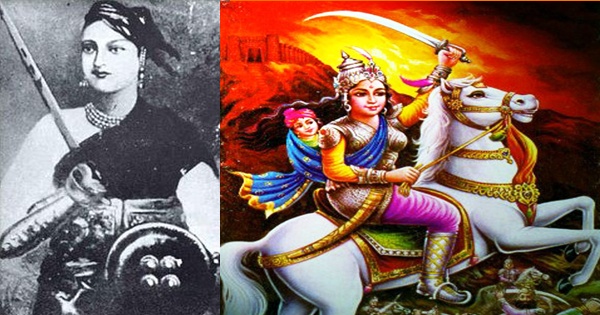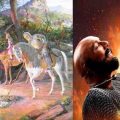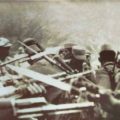How Peshwa Baji Rao Crushed Power of Nizam-Ul-Mulk, Nizam of Deccan
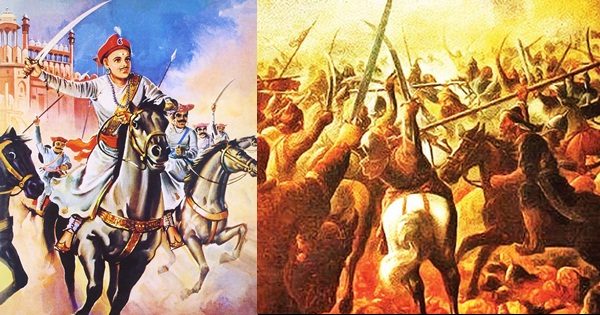
It all started when Mughal ruler Mohammed Shah appointed Nizam-Ul-Mulk Asaf Zah I as Vazir at Delhi. Though Nizam-Ul-Mulk was not happy about the same, he was fed with the caprices and conspiracies of the Mughal Court, blatantly resigned and marched off to Deccan. Thereafter, he defeated Mubrez Khan, the Mughal Governor of Hyderabad. The Nizam then took over the reign of Mughal Deccan, with Aurangabad as his capital. The year was 1722.
Deccan was divided into two sets of powers, the Marathas and the Nizam, and the clash was inevitable. Both were conscious of each other’s power and capacity. Nizam, at the beginning was cautious for two reasons, first, he was aware of the power and capacity of the Marathas, with Baji Rao I leading from the front. Second, Baji Rao had helped Nizam in the battle against Mubrez Khan. Year after year, the Marathas claimed their dues in Malwa, Gujarat and the six subahs of the Deccan, which included Nizam’s territory.
Nizam-Ul-Mulk by the year 1726, slowly eradicated the enemies propelled against him by Mohammad Shah, and was well placed and entrenched in the Deccan. He realized that he was strong enough to wage a campaign against his old antagonists, the Marathas. The design to humble Marathas was exceptionally planned.
The first step was to transfer his capital from Aurangabad to the more distant and military strategic city of Hyderabad.
Thereafter, the Nizam tried to sow seeds of dissent among the military chiefs of Shahu by offering them Jagirs and other incentives to lure them in his side. Chandrasen Jadhav, who already had a feeling of hatred towards his former master Shahu was a new ally of the Nizam and soon others joined the Nizam.
Now, the new target of Nizam was Pratinidhi Shripat Rao, the old rival of Baji Rao. Nizam offered him a rich Jagir in Berar, as equivalent for the Chauth payable on his new capital, Hyderabad. Pratinidhi, flamed and blinded by his hatred towards Baji Rao, urged Shahu, to accept the Jagir in exchange for Chauth, otherwise the Nizam would feel deeply insulted at the paying of this import on his Capital.
Shahu couldn’t comprehend the underlying mechanisms of Nizam Ul Mulk and despite the strongest warnings from the Peshwa, approved the dubious exchange of a Jagir for Chauth as recommended by Shripat Rao.
Nizam-Ul-Mulk encouraged by the story so far resolved to press harder and refused to pay to the Maratha government the Chauth and Sardeshmukhi from the entire dominion composed of six Subahs of the Deccan. He refused to pay it until the question of the Maratha leadership was sorted. The feud was longstanding, and Nizam wanted to deepen the old wound and twisted the knife further when he invited both Shahu and Sambhaji II to send envoys to Hyderabad, where he would act as the principal adjudicator and decide who among the princes had the better title to the crown of the Marathas.
Shripat, in his ordeal to frustrate Baji Rao, encouraged Shahu to agree. Baji Rao assessed the whole scenario and laughed scornfully on his rival’s face and suggested Shahu ‘You must understand the significance of every step the Nizam has taken in the recent past. The shifting of his capital, the subversion of our Sardars, the refusal to pay chauth on Hyderabad and how this is the greatest provocation of all; he has questioned our right to our revenues. It all fits into a pattern, and the aim is the destruction of the Marathas. The leopard will not change its spots. If we do not destroy him, he will destroy us. Let us go to war, there is no other way’.
The suggestion of Baji Rao fueled Shahu’s animosity to the highest degree and Shahu able to comprehend the underlying intentions of the Nizam, declared war. Nizam-Ul-Mulk scored an important strategic goal by winning Sambhaji II to his side. It was an important strategic move. Sambhaji II was the rival Maratha king of Kolhapur and joined Nizam with his larger force. Now, Nizam was confident that he had won the battle to a great extent, by this impeccable move. His plan was simple, to involve and plunge the Marathas into a civil war. The only element he failed to assess was the military genius of Baji Rao.
Nizam-Ul-Mulk’s three consecutive victories over the armies of the Mughal emperor raised his status as a great Indian general. Each battle projected him as a superior general, his talent for organization, supported by the efficient and modern artillery. Baji Rao devised altogether a new branch of warfare, namely the ‘light foray’ tactics. This form of warfare was even new for the Nizam. Baji Rao’s full-fledged campaign against the Nizam was remarkable, and the same must be described.
One has to first understand that Nizam’s army was well equipped, heavily armed, and the same was brilliantly supported by the strong and efficient Mughal artillery. The Nizam adopted the classic Mughal formation of a vanguard, behind which came the main army–left wing, centre (the strongest and where the Nizam stationed himself) and the right wing. In the rear stood the reserve. The artillery in the days of Mughals was drawn by bullocks and was too heavy to be moved freely or easily. The Mughal formation was followed by clerks, accountants, couriers, contractors, spies, shopkeepers, dancing girls, and faqirs too. It was natural and usual in those days for non-combatants to outnumber the soldiers.
Peshwa’s army was without pomp and baggage. There was no artillery. Not even handguns. The troops were equipped only with swords, shields, and long lances. Peshwa’s troops were well accustomed with the equipment; moreover they were high-spirited. The lightning speed of the horses created terror and aroused astonishment in their enemy’s hearts. Baji Rao’s forays, raids, and marauding were quick and deadly. His banner was the saffron flag; the color “saffron” is associated with renunciation and sacrifice. His war cry was “Har Har Mahadev”, the reward awaited his men was plunder.
Nizam and Sambhaji II’s combined forces were ready for the invasion and the same was scheduled for November 1727, after the rainy season. Baji Rao’s intelligence network was working full time, and he was fully aware of the plot. He devised to surprise the enemy and strike first before the enemy did. In August, when it was still raining, Baji Rao started his expedition. His force was composed of 6000-7000 light cavalry. He understood that the expedition must run according to the plan, otherwise it would prove to be a disaster for Shahu and his kingdom.
Sir J.N. Sarkar said, ‘Everyday marching stage of Baji Rao is known with its date from the Maratha official diaries. We thus can accurately calculate the miles daily covered by the Maratha horsemen, the impediments on the way that they overcame and the length of time they could march without rest and contrast them in these respects with the regular army of the Mughals as led by the Nizam.”
Baji Rao never stood in one place for a long to fight a formal battle. He carried sword and fire, as he raided deep into the Nizam’s domain. On 17th October, the Peshwa stormed into Aurangabad. Nizam’s old capital laid waste and he plundered the adjoining city of Jalna. The Nizam immediately sent a force under Awaz Khan. Baji Rao engaged him, briefly outmarching his enemy, to storm another city–Mahur. The route of his expedition was marked by blazing and torching houses that emanated thick clouds of smoke; subjugating city after city of the Nizams territory. In late November, Baji Rao was resting his men and horses, regrouping his army near Jafarabad. On a strange note, the constant plundering hardly supplemented the Maratha baggage. They only took jewelry, gold and silver ornaments.
In mid-December 1727, Baji Rao moved again, crisscrossing the area of North Berar. He suddenly changed direction, turned north to Hadgaon and next he circled Khandesh in west. He stalked towns, plundered treasuries, emptied arsenals. For record, he marched 30-40 miles a day. The Nizam was clueless about Baji Rao’s next move. Baji Rao avoided pitched battles, and began a series of incredulous rapid marches, shocking the enemy out of his shadow. It was a cross-country war over vast rugged terrain. The Nizam with his large army and heavy artillery couldn’t plan what to do next? Or which to attend? And what to leave?
Up mountains, across rivers, through ravines, cutting valleys, Baji Rao pressed forward and sideways. It seemed like a four-dimensional attack, though in reality it was not. This kind of warfare was new for the Nizam, and he soon devised a mechanism to curtail this expedition before the damage became irreparable. Baji Rao revealed (not to be), that his next target was the wealthy city of Burhanpur, to burn it down to ashes. To fortify the false impression, he made a move with a small detachment towards the city. The Nizam was alerted, and with Awaz Khan moved to save the city. Awaz Khan leading the vanguard followed the Marathas, with Nizam coming up on stage for rallying support. Exhausted by the hardships supplemented by the adversity of the waterless tract, the forces of Nizam wearied out. But there was no sign of Baji Rao, as if he and his army evaporated into thin air. The Nizam roared; ‘Where is that son of Satan? Is he in behisht (heaven), is he in Dozak (hell) where he belongs? Where he will he strike next?’
The question was, where was Baji Rao? The Peshwa was far away out of the clutches of the Nizam, crossed two major rivers, Tapi and the Narmada, and stormed Gujarat, to the utter shock and confusion of the Mughal Governor, Sarbuland Khan, the pledged enemy of the Nizam. Here, the Peshwa did something, which might have had made the Nizam smile (in anguish), when he might have unraveled the mystery. Baji Rao informed Sarbuland Khan that he stormed Gujarat under the orders of Nizam.
Now, Sarbuland Khan, for some unknown reason, believed the fake story, that the invasion had the approval of the Nizam. Thereafter, Baji Rao sent a message to Sarbuland Khan; ‘I have no intention of doing you any harm. You remain Sarbuland (head held high) and never ‘Sarneechay’ (head bowed down).’
The Nizam, also no amateur and one of the tallest generals of his time, devised a counter move. He stopped chasing Baji Rao, and instead with his strong army, headed for Pune. This was a brilliant counter move as Pune was devoid of its defenders. When, Baji Rao started his campaign of lighting foray tactics, he had a small force of 6000-7000, but with the days of campaign, he needed reinforcement, because of which, more units left from Pune, leaving the city vulnerable.
The move by Nizam frightened Shahu, and he, with his entire court, took refuge in the Purandar fort. The situation was delicate. The Nizam ravaged the entire district and entered the city of Pune with no resistance. Here, supported by much ostentation and grand ceremony, he supported Sambhaji II’s claim and authority over the country and further celebrated the marriage of Sambhaji II with a Rajput princess of Ramnagar. According to Maratha official records, the time was mid-February 1728. Baji Rao received distress messages from Shahu to return soon to defend the Maratha heartland.
Baji Rao needed to act and act more tactfully; so he did something unprecedented. Instead of going to Pune, with his reinforced cavalry, he turned south-east and along the Godavari river and like an avalanche, descended into the Nizam’s territory, heading straight for the capital, Aurangabad. It is hard to conceive how the Nizam may have had reacted when he came to know of this onslaught.
The Nizam acted quickly and as an expected move, he immediately set out for Aurangabad from Pune, with his troops in pursuit of Baji Rao. The Peshwa was near Palkhed, about 28 miles from Aurangabad. For the next six days, he plundered on both planks of Nizam’s line of advance to provisions of food grains, goats, vegetables, so that nothing was left for the Nizam’s army.
‘Whenever the Deccan army had to cross a ravine or a stream, Baji Rao used to launch a furious attack but when fighting began he took to flight and engaged in Cossack-like-tactics.’
The Nizam had to cross the Godavari river at Puntambe along with his cavalry, infantry and artillery – a strong force of nearly 40,000 soldiers. So, the crossover had to be in phases; the advance party crossing the river on the first day, the Nizam and his main troops, on the second day, the artillery crossing the third day. The artillery would not be there to support the Nizam’s army for a day, and it was a big opportunity for Baji Rao.
Baji Rao struck the moment Nizam and his troops crossed the river. His repeated cavalry raids forced the Nizam’s army to move into a waterless tract. They were already deprived of all provisions of fodder and rations. The load carrying carts, mules and donkeys were destroyed or been driven away.
Outnumbered, Nizam’s army including Nizam himself, was surrounded by the troops of Baji Rao. The Nizam and his army had to face irreparable damage, hardships, but the Nizam in his spirit never gave up. Finally, with the artillery to support (he had got across the river with few of his big cannons), he laid siege a better position near the town of Mungi Shivagaon on the Godavari river.
The Nizam, not willing more casualty and in deep anguish and in utter disgust, sent Awaz Khan to draw up the terms of settlement. Baji Rao demanded immediate surrender of Sambhaji II and recognition of Shahu as the only sovereign of the Marathas. He also demanded payment of all arrears of Chauth and Sardeshmukh from the six subahs of the Deccan and various other Maratha claims.
The Nizam, on a humble note, agreed to all the terms of the settlement, but refused to surrender Sambhaji II.
Eventually, it was settled that the Nizam would send Sambhaji II to Panhala, and it was upon the discretion of Shahu, to deal with him, as he deemed fit.
The treaty of Shevagaon was signed in March 1728. The Nizam retired to his dominion. This was how the first encounter between Nizam and Peshwa Baji Rao came to a closure.
This campaign propelled Jadunath Sarkar to describe Baji Rao as a Heaven born cavalry leader.
References: –
1. History Modern India by S.N. Sen
2. Agarwal, Abhinav. The Maratha Military Genius: The Battle of Palkhed.
3. Paul, Jaiwant:Baji Rao: The Warrior Peshwa.
Acknowledgment:
The article is incomplete without the efforts of Bandana Singh. She is been doing all the research work. Manoshi di, for her continuing support.
Featured image courtesy: Amar Chitra Katha and DNA India.
Abhishek Bose
Latest posts by Abhishek Bose (see all)
- Ramanujan: Tryst with Mathematics from Cambridge to His Last Days at 32 - February 22, 2022
- Srinivas Ramanujan: Indian Mathematician who defined Infinity; An Analysis - July 1, 2021
- Vivekananda Idolized Rishis in World Stage, but Sadhus Vilified in India - November 23, 2024

